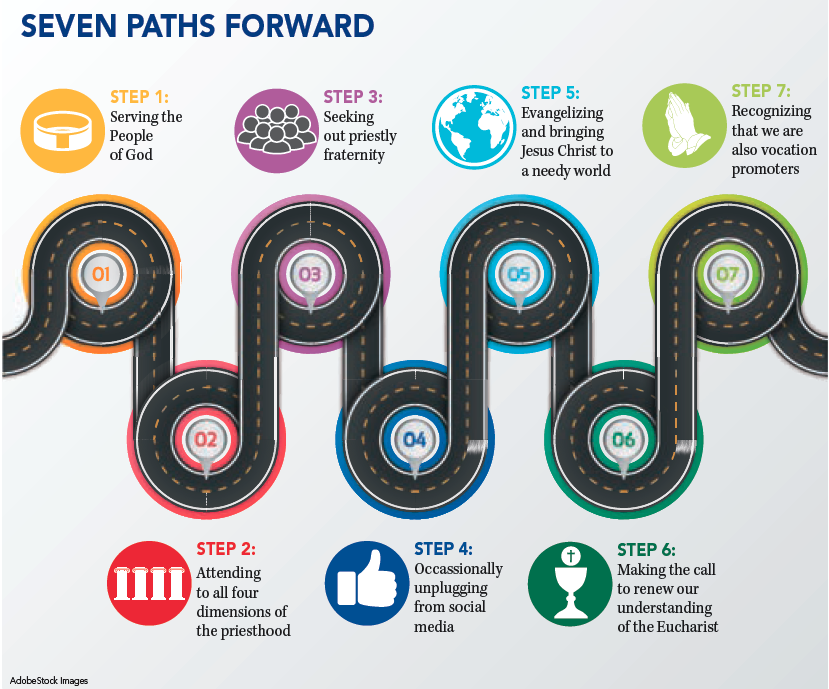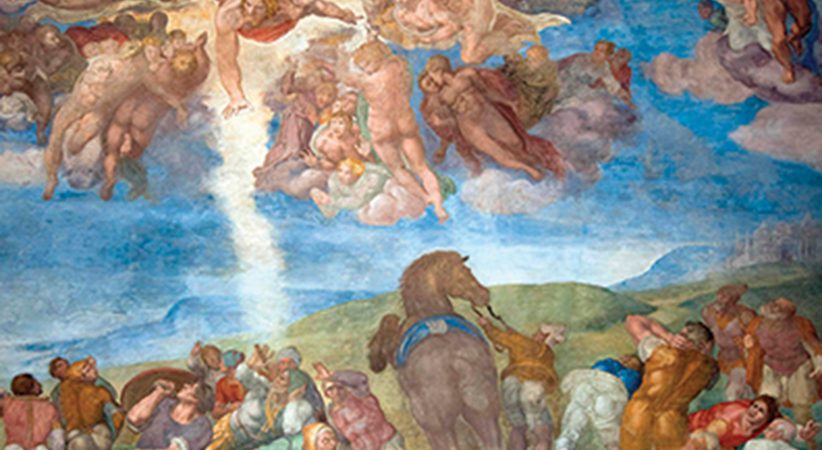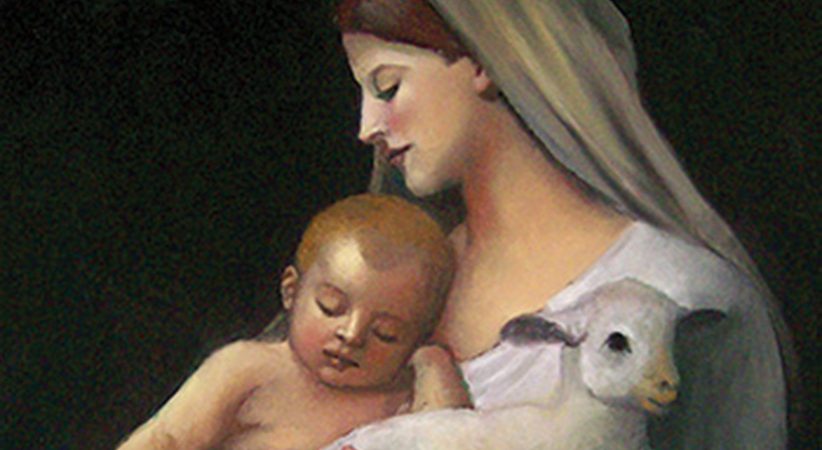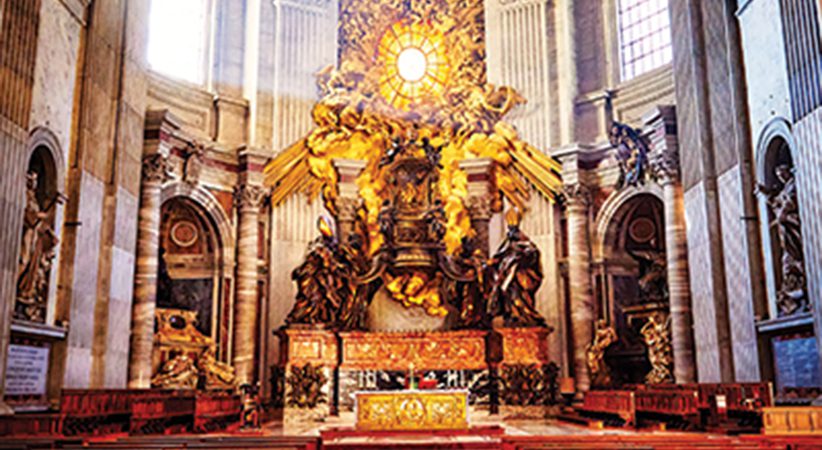Renewing the Presbyterate Today
Father Ronald D. Witherup Comments Off on Renewing the Presbyterate Today
From Oct. 11, 2022, through Dec. 8, 2025, the Church commemorates the 60th anniversary of the most dramatic ecclesial event of the 20th century, the Second Vatican Council. Whether you are a fan or a critic, one cannot deny its incredible impact in the last six decades. One of the main watchwords for the council was aggiornamento, an Italian word basically meaning “updating,” but implying renewal and refurbishment as well.
As a theme during the council, the priesthood was almost an afterthought. The council was more invested in larger topics such as ecclesiology, the episcopacy, divine revelation and the relationship of the Church to the modern world. The council fathers only decided late in the game to create two documents on the priesthood, which became Presbyterorum Ordinis (“Decree on the Ministry and Life of Priests”) and Optatam Totius (“Decree on Priestly Training”). While these clearly helped to reform the priesthood in subsequent decades, and led to new programs of priestly formation, the sexual abuse crisis, coming to wide public knowledge in 2002, produced more calls for reform of the clergy. What constitutes a good reform, or renewal, of the presbyterate in our day, 60 years after the council?
Once and Future Presbyterate
A quick glance at Church history shows that there is a paradox built into the concept of renewal in almost any age. The heart of the paradox is that in order to renew something for the future, you normally need to look backward. Let me give two examples.
In the 17th century, the founder of my community of diocesan priests, Father Jean-Jacques Olier, was the pastor of a large parish, St. Sulpice, with an enormous population. Today, this parish sits in the middle of Paris. In Olier’s day, however, it was outside the diocese of Paris and under the jurisdiction of the Abbey of Saint-Germain-des-Prés, which today is a neighboring parish. Olier was a visionary whose goal was to renew the presbyterate in his day as a response to the Council of Trent. The priesthood at the time was in disarray. Presbyters received almost no formal training but apprenticed themselves to established pastors. The Council of Trent had called for the establishment of seminaries and seedbeds for priestly formation. Olier believed that if he could help reform the clergy in his day, the rest of the Church would follow.
He set about his task by founding seminaries throughout France, and later abroad, including Canada and the United States, and establishing formal formation programs. These centered on what we would now call the “basics.” Olier promoted training in holiness, encouraging an intense prayer life, spiritual direction, the daily reading of Scripture, intense devotion to the Eucharist and even the development of a question-answer catechism, a novelty at the time.

The second example is Vatican II itself. Although there are numerous aspects of the council’s teaching that were new, such as the response to developments in the modern world, many aspects of conciliar teaching relied upon what was known as ressourcement. This French word basically meant a return to the original sources, in particular, the Bible as the word of God and the teachings of the patristic era. Thus numerous influential theologians — think of names like Congar, Chenu, Rahner, Ratzinger and others — produced erudite studies of biblical and patristic insights that became the foundation of the council’s documents. Paradoxically, then, a return to the sources paved the way for the council’s multifaceted renewal of modern Church life.
In this same spirit, I propose some potential paths to follow in order to renew the presbyterate in our own day.
Let’s commence with an insight from ancient Israel. Psalm 133:1 begins with the poetic line, “How good and how pleasant it is, / when brothers dwell together as one!” This sentiment, in fact, became a school motto when I was a seminarian. We sang a Latin version of it on special feast days and at ordination ceremonies: Ecce quam bonum et quam iucundum habitare fratres in unum (Vulgate, Ps 132:1). It never ceased to raise our spirits and draw us back to the ideal vision of living in harmony as future priests.
Alas, as years went by, the fractures in this ideal of a unified presbyterate became visible. No doubt, many factors exacerbated these divisions. Like Paul’s wayward Corinthians (cf. 1 Cor 1:11-13), various camps appeared. I think of factors like ideological divides, for sure, which have only increased in recent decades. Some evaluated the effects of the council positively, while others viewed them negatively. Some promoted certain political agendas, and others pursued only personal pet projects. Liturgy also became a neuralgic point, with opposing celebratory styles and music preferences becoming particular sore points.
More common factors, to my mind, are also evident: ambition, jealousy and one-upmanship. Some presbyters quite obviously sought the episcopacy or at least becoming a monsignor. Others pined for plum parishes and greener pastures. Another factor was also the relationship with the bishop. Who’s in and who’s out, who wields more influence — such are still evident divisions in presbyterates that I have encountered.
An even more alarming situation is the generational divide I have witnessed in many dioceses around the world. This was perhaps always a problem. As a young priest, I remember well the tensions between older presbyters and us “young bucks.” Some of these differences concerned the diverse styles of formation we experienced. Others simply grew out of the challenge to integrate newer, younger presbyters into an already established community. Luckily, there were exceptions to this situation. I found myself warmly welcomed by some of the older, more experienced clergy, and I certainly learned a lot from them.
As in ancient Israel, merely singing a psalm is not going to erase presbyteral fissures and produce absolute harmony. Musically, harmony is the mixing of different notes and diverse voices that blend together in a pleasing unity. Singing the same note is not harmony; it’s monotony. Yet the key to harmony is singing notes that blend well together.
Seven Paths Forward
There is no magic prescription for how to renew presbyteral identity in our day. Some steps, however, seem in order. Here I suggest seven.
First, we need to acknowledge that, in light of the ongoing effects of the sexual abuse scandal, we need to put our nose to the grindstone and do what we were ordained to do: serve the People of God humbly as Jesus, the Good Shepherd, did. We cannot deny that the presbyterate has been tarnished. This need not be a permanent judgment. The most effective way to restore confidence in the priesthood is to fulfill our duties with integrity and renewed commitment. This is not a glamorous option perhaps, and it may take a generation or two, but renewing the priesthood in any age always begins by returning to the basics.
Second, we need to attend to all four dimensions of our identity described in the current literature on priesthood: human, spiritual, intellectual and pastoral. We need to acknowledge that in each of these areas, we can make progress. Humanly, we can strengthen our relationships within and outside the presbyterate. Spiritually, it should go without saying, the quality of our prayer life and our relationship with Christ are crucial to staying centered on our mission.
Intellectually, staying abreast of developments in theology is important. Conversations with seminarians and young priests can be helpful for older priests to know what seminary curricula are like nowadays. In contrast, younger clerics can learn a host of pastoral insights from those more experienced. Some of the most up-to-date presbyters I know are actually in their senior years of ministry. They never stop reading, they ask good questions, and they seek out confreres with whom to have serious discussions.
Pastorally, of course, we are often comfortable in our element. But we can examine our conscience on how well we really serve, how well we preside at Eucharist and the other sacraments, and how welcoming we are of all.
A third area specifically relates to presbyteral identity as a common, shared experience. Do we seek out priestly fraternity, perhaps with support groups? Do we do whatever is possible to support the bishop and cooperate with his vision of diocesan ministry? This is not a naive notion that we will all have the same ideas, but openness to dialogue and putting forth our own positions with true humility go a long way to fostering cooperative ministry. An added action could also be simply attending diocesan events. Being present to one another on occasions already offered, such as diocesan convocations, retreats, days of recollection and ongoing formation seminars helps foster a cooperative spirit.
The fourth area, perhaps surprisingly, concerns social media. We presbyters are not immune to being influenced by modern social means of communication. Sadly, some of us lack the ability to discern the proper use of such tools and allow ourselves to be overly engaged in, and influenced by, irresponsible social posts. We can affirm the many positive aspects of social media like Twitter, Facebook, Instagram, etc., but we sometimes need to rein in our temptation to accept everything online as gospel. These have inadvertently increased the chasms in our modern world. Unplugging from such tools from time to time is important, as well as learning to evaluate more objectively what is truth and what is mere ideological manipulation.
My fifth point concerns synodality, the topic for the next Synod of Bishops in 2023-24. Granted, there is some resistance to this notion, in part because it demands more time and is less “efficient” than simple autocratic decision-making, yet it is a part of the Church’s life, already evident in the Acts of the Apostles (cf. 15:1-29). An African proverb says that if you want to walk fast, then walk alone; if you want to walk far, walk together. We presbyters, I hope, should want to walk far. Our mission is to evangelize and to bring Jesus Christ to a needy world. We need to work together to accomplish this mission. Pope Francis has reinforced this task by emphasizing, as did Vatican II before him, that evangelization is part of the DNA of the Church’s identity. Presbyters are on the front lines of this mission, but not as Lone Rangers.
Sixth, another contemporary issue concerns the U.S. Church moving toward a holy year devoted to the Eucharist (2025). One of the challenges will be to see how well presbyters respond to the call to renew our understanding of the Eucharist. Acknowledging that the impetus for this endeavor was the shocking recognition that only about one-third of Catholics believe in the real presence of Jesus Christ in the Eucharist, we need to do more than simply promote Eucharistic devotions. The year should rather provide a perfect opportunity to re-energize effectively our celebration of the Mass. We could review the ways we explain the Eucharist and reassess our own competency as presiders and preachers. Even the basic conciliar understanding of the relationship between the word of God and the Eucharist would be a helpful theme to explore.
Finally, Jesus’ invitation to pray that the master of the vineyard sends more workers into his vineyard (cf. Lk 10:2) behooves all of us presbyters to recognize that we are also vocation promoters. It is said that the most effective promotion of vocations is a happy priest. This does not mean that we gloss over the many challenges and sacrifices inherent in the presbyterate, but it does mean that we are called to project outwardly the joy that we experienced on the day of our ordination.
Let the psalmist’s words come back to the fore. Where fraternal harmony in the presbyterate is evident, there will be God’s blessing!
SULPICIAN FATHER RONALD WITHERUP is former superior general of the Society of Saint Sulpice. He has authored many books, including “Gold Tested in Fire: A New Pentecost for the Catholic Priesthood” (Liturgical Press, 2012).
………………………………………………………………………………………………………………………………………….
Collaboration with Academic and Spiritual Centers
“Institutes of study and research, centers of spirituality, like monasteries of exemplary observance, and shrines constitute many reference points for theological and pastoral updating, oases of silence, prayer, sacramental confession and spiritual direction, healthy rest including physical relaxation, and moments of priestly fraternity. In this way also, the religious families may collaborate in the permanent formation of priests as well as contributing to the renewal of the clergy required by the new evangelization of the third millennium.” — Directory on the Ministry and Life of Priests, No. 92
…………………………………………………………………………………………………………………………………………..





